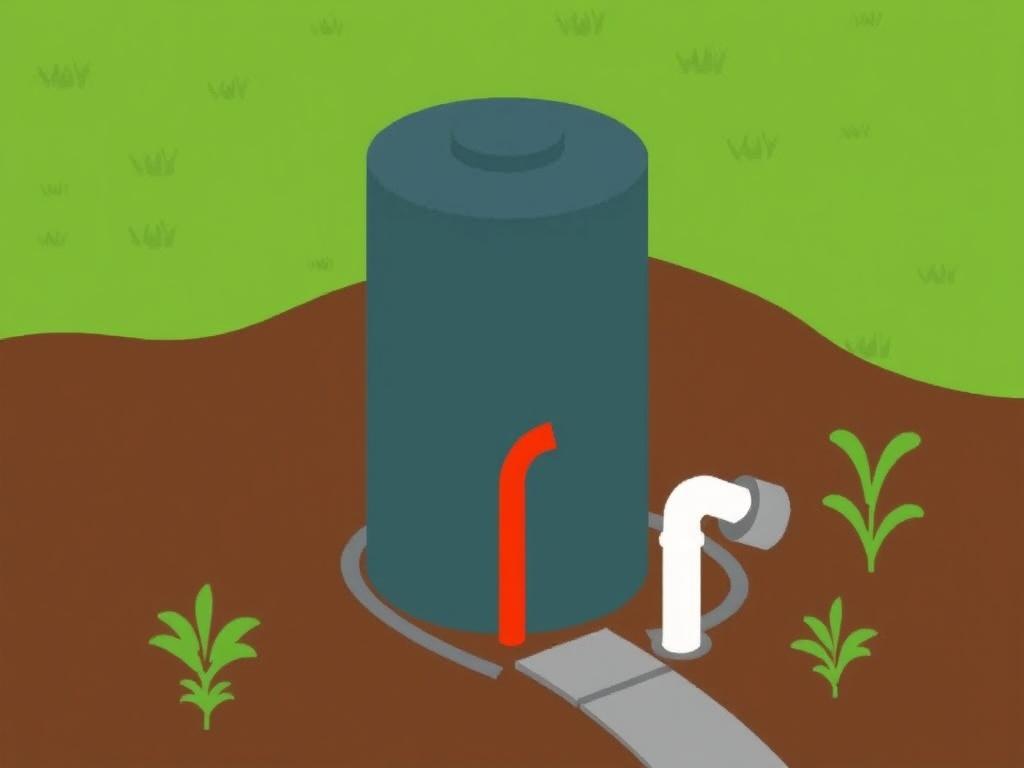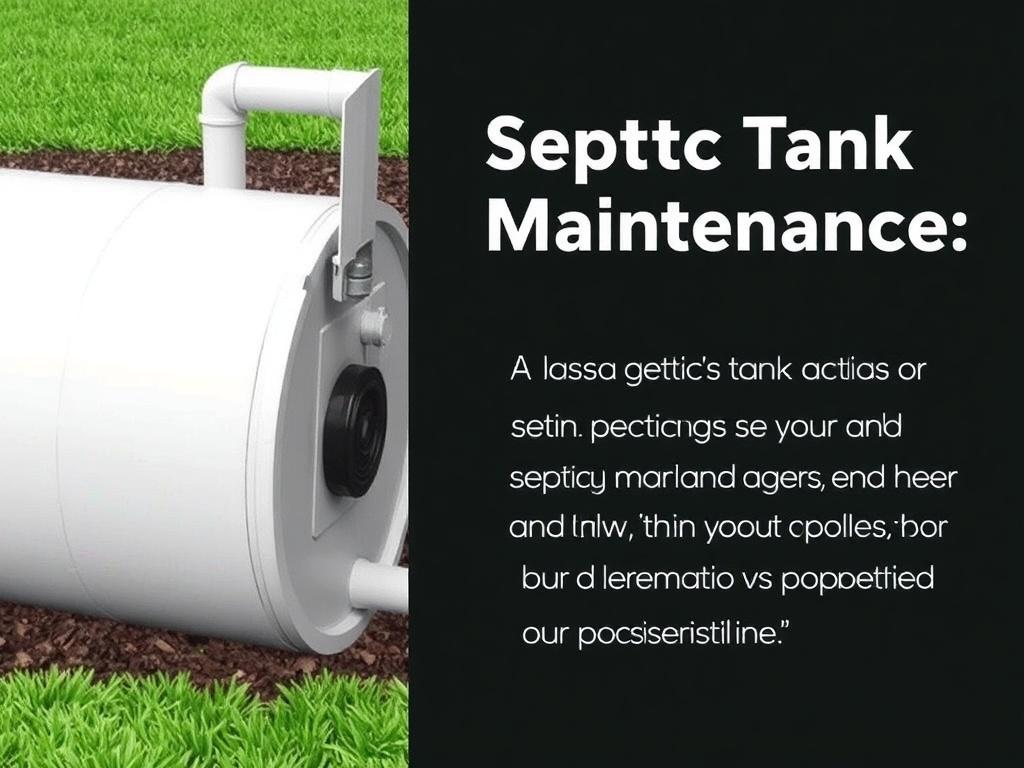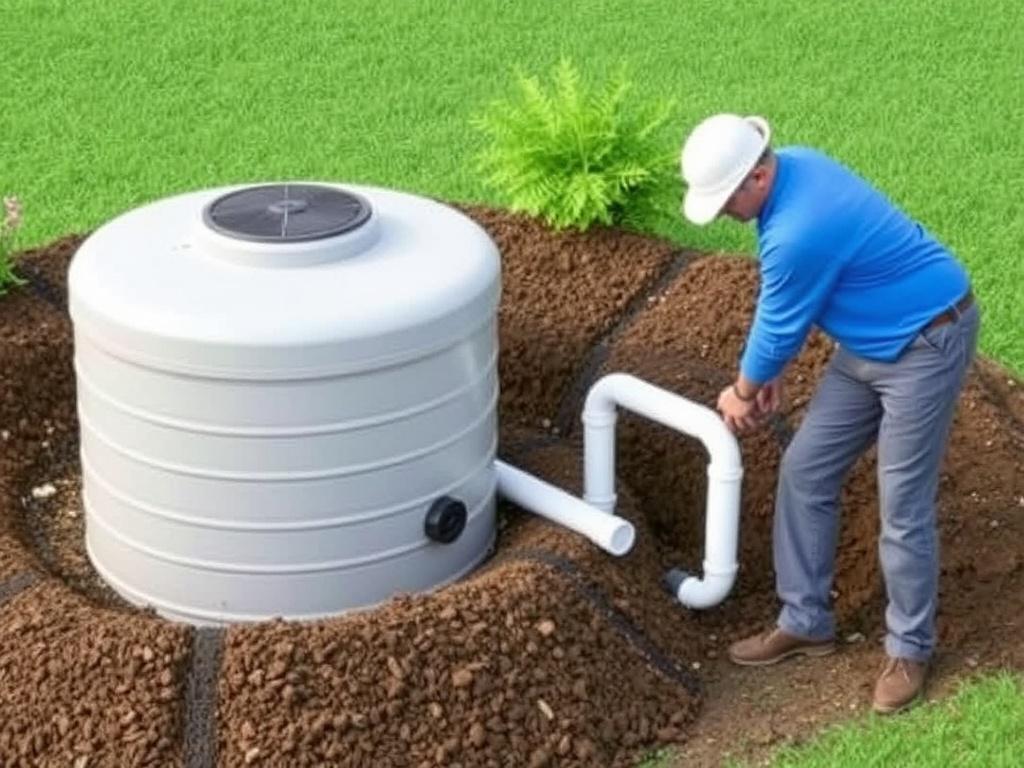- Understanding the Basics of Septic Tank Systems
- Signs Your Septic Tank Needs Maintenance
- How Often Should You Schedule Septic Tank Pumping?
- Essential Septic Tank Maintenance Tips for Homeowners
- Common Septic Tank Problems and How to Address Them
- Septic Tank Inspection and Pumping Process Explained
- The Environmental Impact of Neglecting Septic Tank Maintenance
- Septic Tank Maintenance Costs: What to Expect
- Do-It-Yourself Septic Tank Maintenance: What You Can and Can’t Do
- DIY Maintenance Tasks:
- Tasks that Require Professionals:
- Innovations in Septic Tank Maintenance and Technology
- Conclusion
Understanding the Basics of Septic Tank Systems
When it comes to maintaining a healthy home, understanding your septic tank system is crucial. Septic tanks are underground wastewater treatment structures commonly used in rural areas without centralized sewer systems. They collect and treat household wastewater by separating solids from liquids, allowing the liquid effluent to flow into the drain field for further treatment. Proper septic tank maintenance helps prevent costly repairs, environmental contamination, and health hazards.
Septic tanks work by holding wastewater long enough for solids to settle to the bottom, forming sludge, while oils and lighter materials rise to the top as scum. The middle layer, which is reasonably clear liquid, exits the tank and is filtered through the drain field or leach field. If the septic system is not properly maintained, solids can overflow into the drain field, causing blockages and system failure. Understanding these basics will help you appreciate why septic tank maintenance is an ongoing responsibility for homeowners.
Signs Your Septic Tank Needs Maintenance
Knowing when your septic tank needs attention is vital to preventing a messy and expensive disaster. Many people delay septic tank maintenance simply because they are unaware of the warning signs. Here are some common indicators that your septic system requires expert care:
- Slow drains: If multiple drains in your home are slow, this could point to a clogged septic system.
- Unpleasant odors: Foul smells near your septic tank or drain field might mean the system is overflowing or damaged.
- Pooling water or soggy areas: Excess wastewater surfacing could indicate a failing drain field.
- Backups in toilets or sinks: These backups can be caused by a full or clogged septic tank.
- Bright green grass over the drain field: While green grass is generally good, overly lush patches might suggest leaks.
If you notice any of these signs, it might be time for a septic tank inspection and maintenance. Being proactive can save you from costly repairs or system failure.
How Often Should You Schedule Septic Tank Pumping?
One of the most important aspects of septic tank maintenance is regular pumping. Over time, solids accumulate at the bottom of the tank, reducing its capacity and potentially causing system issues. But how often should you schedule septic tank pumping?
There is no one-size-fits-all answer to this question because tank size, household size, and water usage vary. However, a general guideline is to pump your septic tank every 3 to 5 years. Here’s a helpful table summarizing typical pumping intervals based on tank size and household members:
| Tank Size (Gallons) | Household Size | Recommended Pumping Interval |
|---|---|---|
| 750 | 1-2 people | 5 years |
| 1000 | 3-4 people | 3-4 years |
| 1250 | 5-6 people | 3 years |
Keep in mind that these recommendations may vary depending on your actual usage and system condition. It’s wise to consult with a professional septic service provider who can assess your specific needs.
Essential Septic Tank Maintenance Tips for Homeowners

Maintaining your septic tank system requires some effort, but many simple practices can prolong its life and keep it working efficiently. Here are some essential septic tank maintenance tips to follow:
- Limit water usage: Excess water can overload your septic system and cause it to fail. Fix leaks, use water-saving fixtures, and stagger laundry loads.
- Dispose of waste properly: Never flush non-biodegradable items, grease, or chemicals down the drain as they can clog or damage the system.
- Protect your drain field: Avoid parking vehicles or planting deep-rooted trees near the drain field to prevent damage.
- Regular inspections: Have a professional inspect your septic system every 1-3 years to catch problems early.
- Install risers: Septic tank risers make access easier for pumping and inspections, reducing cost and hassle.
These helpful habits will enable your septic system to provide safe, effective wastewater treatment for years to come.
Common Septic Tank Problems and How to Address Them

Despite careful upkeep, septic tanks can encounter problems. Recognizing common issues and knowing how to address them helps you act quickly and avoid greater damage. Here are some frequent septic tank problems:
- Clogged pipes: Soap scum, grease, and debris may clog pipes leading into or out of the tank. A professional plumber can clear these blockages.
- Full or overflowing tank: If pumping is overdue, solids can overflow into the drain field, which might require repair or replacement.
- Cracked or damaged tank: Structural leaks can contaminate groundwater; replacing the tank is usually necessary.
- Drain field failure: Caused by compaction, flooding, or clogging, this serious issue often demands expert evaluation for repair options.
Being aware of these septic tank issues helps you monitor your system’s health and call in professionals when needed.
Septic Tank Inspection and Pumping Process Explained

If your septic system shows signs of problems or it’s time for routine pumping, understanding what happens during an inspection can put your mind at ease. Here’s a step-by-step overview of what professional septic service includes:
- Locate and uncover the septic tank: The technician will find the tank access points and remove the lids.
- Measure sludge and scum layers: Special tools measure the thickness of accumulated solids to determine if pumping is required.
- Inspect tank and components: The professional checks the tank walls, baffles, and pipes for damage or leaks.
- Pump the tank if necessary: Using a vacuum truck, the technician removes sludge, scum, and wastewater from the tank.
- Dispose of waste safely: The removed waste is taken to a wastewater treatment facility for proper processing.
- Replace lids and finish: Tank covers are securely replaced and the area restored.
Knowing what to expect during a septic tank inspection and pumping session reduces anxiety and prepares you to maintain your system responsibly.
The Environmental Impact of Neglecting Septic Tank Maintenance
Ignoring septic tank maintenance isn’t just risky for your home—it also has serious environmental consequences. A faulty septic system can release untreated sewage into groundwater, surface water, and soil, contaminating nearby ecosystems and drinking water sources.
When untreated wastewater leaks from a damaged or overloaded septic tank, it carries harmful bacteria, viruses, and nutrients such as nitrogen and phosphorus into lakes, rivers, and streams. This pollution can lead to toxic algal blooms, fish kills, and health problems for humans and animals alike. Additionally, groundwater contamination with pathogens poses a direct threat to community wells supplying drinking water.
By adhering to regular septic tank maintenance and inspections, you help protect local waterways and the broader environment from pollution caused by sewage leaks. Your efforts play a vital role in sustainable living and public health.
Septic Tank Maintenance Costs: What to Expect
Understanding the costs associated with septic tank maintenance can help you budget and plan accordingly. While costs vary by region and service provider, here is a typical range of expenses related to septic maintenance tasks:
| Service | Cost Range (USD) | Frequency |
|---|---|---|
| Septic tank inspection | $100 – $300 | Every 1-3 years |
| Pumping and cleaning | $200 – $500 | Every 3-5 years |
| Minor repairs (e.g., pipe unclogging) | $100 – $500 | As needed |
| Drain field repair or replacement | $2000 – $15,000+ | Rare, as needed |
Investing in routine septic tank maintenance is cost-effective compared to dealing with unexpected, major repairs resulting from neglect. Remember, prevention and consistent care save money in the long run.
Do-It-Yourself Septic Tank Maintenance: What You Can and Can’t Do
While many septic tank maintenance tasks require professionals, there are a few things homeowners can do to help keep the system functioning well. Here’s a quick guide on what’s safe and recommended to do yourself versus when to call in the experts:
DIY Maintenance Tasks:
- Monitor water usage and repair household leaks promptly.
- Avoid flushing harmful items such as grease, diapers, or chemicals.
- Protect your drain field by not driving or parking heavy vehicles over it.
- Schedule routine septic inspections with professionals and keep records.
- Keep accurate records of pumping and repairs for future reference.
Tasks that Require Professionals:
- Septic tank pumping and sludge removal.
- System inspections requiring tank access and measurements.
- Repairs or replacements of components, pipes, or drain field.
- Handling wastewater disposal following pumping services.
Being proactive with DIY maintenance while relying on professionals for complex tasks strikes the best balance for septic tank care.
Innovations in Septic Tank Maintenance and Technology
Septic tank maintenance has seen innovations in recent years, making the process easier, more efficient, and environmentally friendly. Modern septic systems now integrate advanced technologies such as:
- Effluent filters: These devices help prevent solids from leaving the tank and clogging the drain field, extending system life.
- Automatic dosing systems: These regulate wastewater flow to the drain field, preventing overloads.
- Remote monitoring sensors: Wireless devices now enable homeowners and service providers to track system performance in real-time, identifying potential problems early.
- Eco-friendly additives: Certain biological additives improve tank bacteria balance, aiding in waste breakdown without harmful chemicals.
These advances allow homeowners better control over septic tank health, reduce maintenance frequency, and enhance environmental protection. As technology evolves, maintaining septic systems will become even more user-friendly and effective.
Conclusion
Septic tank maintenance might not be the most glamorous household task, but its importance cannot be overstated. Proper upkeep preserves system function, protects your investment, and safeguards the environment and public health. From understanding the basics of how a septic tank operates to recognizing warning signs and scheduling routine pumping, the steps you take today will prevent costly repairs tomorrow. Armed with practical maintenance tips and knowledge about professional services, you can confidently care for your septic system. Remember, being proactive with septic tank maintenance not only keeps your home running smoothly but also contributes to a cleaner, safer environment for everyone. So don’t wait for problems to arise—make septic maintenance a regular part of your home care routine and enjoy peace of mind for years to come.
Помогла вам статья?






